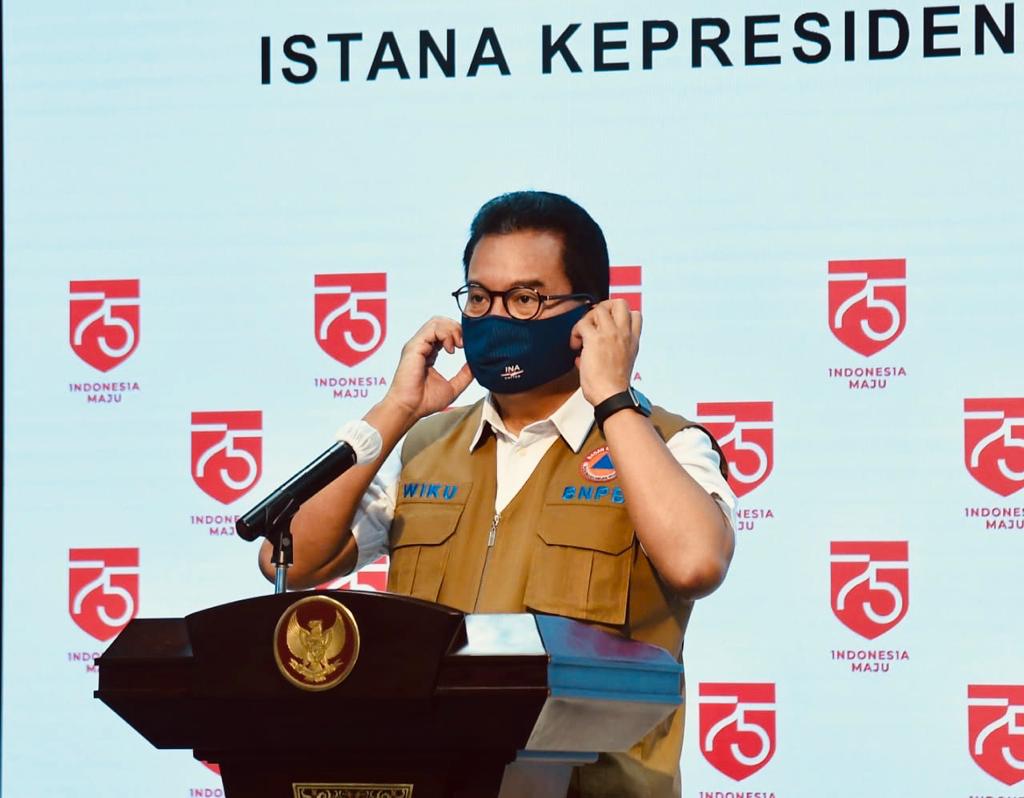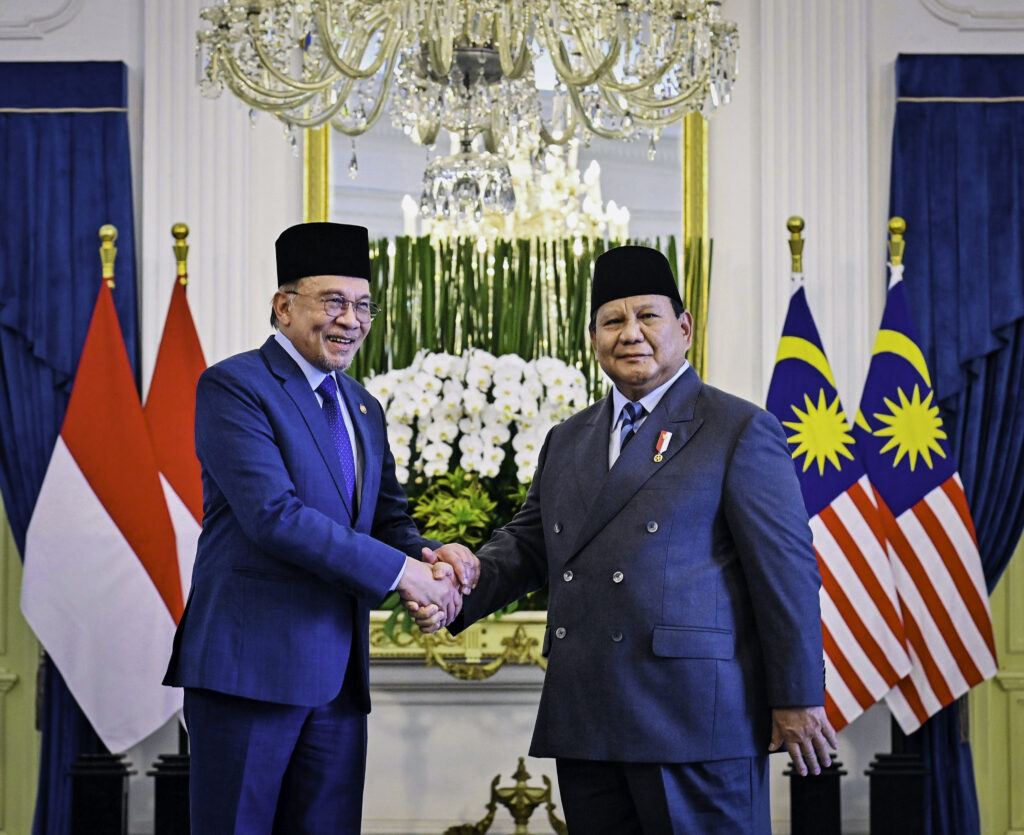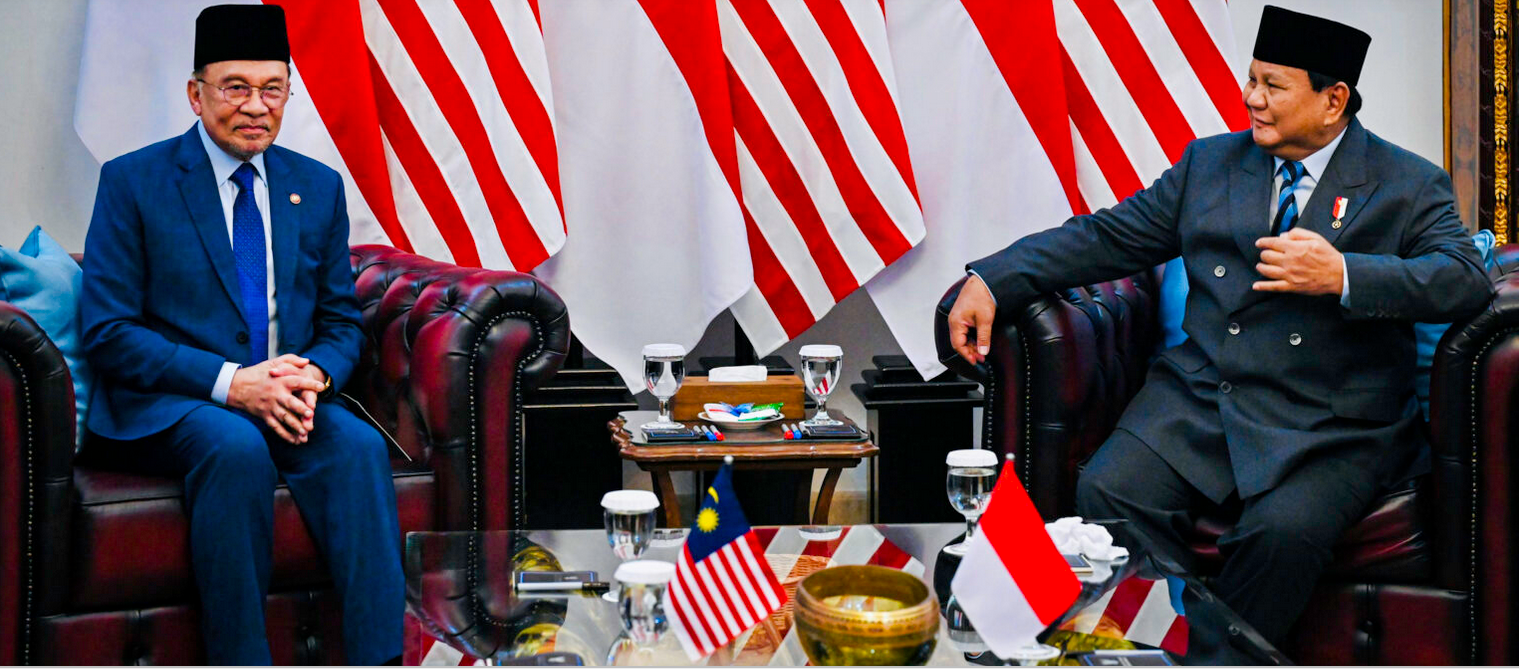COVID-19 Working Committee Reports Drop in Number of Red Zone Regions

Spokespersons of COVID-19 Working Committee Wiku Adisasmito gives a press statement at the Presidential Office, Jakarta, Tuesday (18/8). (Photo by: BPMI)
The number of regions categorized as red zones has decreased to 29 regencies or cities, while the number of orange zones has increased to 237 regencies or cities during the previous reporting period (16 August 2020), Spokespersons of COVID-19 Working Committee Wiku Adisasmito has said.
“A total of 174 regions are categorized as yellow zones or low risk of infection and the number has decreased. As many as 42 regencies or cities are categorized as green zones or zero confirmed case and 32 regencies or cities are not affected,” Wiku said in his press statement, at the Presidential Office in Jakarta, Tuesday (18/8).
According to Wiku, 18 regencies or cities have changed their status from red zones into orange zones in the past few weeks, adding that 49 regencies or cities have also changed their status from yellow zones into orange zones.
“The COVID-19 clusters have emerged in moderate-risk areas. This needs to be our concern since it is showing signs of increase,” he said.
Based on the data chart, the number of moderate-risk areas or orange zones has increased from 32.88 percent (12-19 July 2020) to 35.99 percent (19-26 July 2020). The number has risen to 43.00 percent (26 July-2 August 2020). It continued to rise at 43.19 percent (2-9 August 2020) and it has stood at 46.11 percent (9-16 August 2020).
On that occasion, Wiku announced 18 regions that have changed from red zones into orange zones, including Special Region of Aceh Province, North Sumatra Province, South Sumatra Province, Special Capital Region of Jakarta Province, East Java Province, Central Kalimantan Province, South Kalimantan Province, South Sulawesi Province, Southeast Sulawesi Province, Gorontalo Province, Maluku and North Maluku Provinces.
In addition, he also announced 49 other regions that have changed from low-risk areas to moderate-risk areas, including Special Region of Aceh Province, North Sumatra Province, South Sumatra Province, Bangka Belitung Islands Province, Riau Islands Province, Banten Province, West Java Province, Central Java Province, Special Region of Yogyakarta Province, East Java Province, West Nusa Tenggara Province, West Kalimantan Province, Central Kalimantan Province, East Kalimantan Province, North Kalimantan Province, North Sulawesi Province, South Sulawesi Province, Southeast Sulawesi Province, West Sulawesi Province, West Papua and Papua Provinces.
“Those orange zones must get our attention since the number continues to increase,” he added.
In the meantime, Wiku also reminded the public regarding COVID-19 terms based on Regulation of Minister of Health Number HK.01.07 / MENKES / 413/2020. They are as follows:
– The probable case refers to COVID-19 cases with symptoms but have not tested positive by laboratory examination result of rapid test or PCR test.
– The suspect case refers to COVID-19 cases with symptoms and have a history of 14 days of close contact;
– The confirmed case refers to a person who tests positive for the COVID-19 based on rapid test-PCR test, be it symptomatic or asymptomatic;
– The close contact is a person who has a history of contact with a COVID-19 probable case or confirmed case;
– Discarded is a person with suspect status with 2 time negative rapid test- PCR test results for 2 consecutive days or a close contact status who has completed the quarantine period of 14 days.
– Complete Isolation is asymptomatic confirmed cases with rapid test-PCR test and additional 10 days of self- isolation. Probable cases/confirmed cases without rapid test-PCR test and at least 3 days after not showing symptoms. Probable cases/confirmed cases with symptoms with a negative rapid test-PCR test, plus at least 3 days after not showing symptoms.
– Death is confirmed cases or probable COVID-19 cases that died.
On that occasion, the spokesperson also said many people still ignore health protocols, including a relaxing bicycle activity that was joined by more than 3000 people in Padang in West Sumatra on 16 August.
“The crowd were so close and they did not even wear face masks. We continue urge the people and regional leaders to pay attention to this so such thing will not happen in the future,” he said.
Another case, Wiku continued, was a musical performance attended by thousands of visitors without wearing asks at the Jumprit nature tourism in Temanggung in Central Java Province on 15 August.
In the latest case, he said that there was a community action from the Declaration of the Action Coalition Movement to Save Indonesia at the Proclamation Monument, Jakarta. “We could see a large crowd there. Some of them wore face masks, while some did not or they did not wear masks properly; they put their masks under their chins,” he added.
According to him, those actions do not support what the Government has done in preventing the COVID-19 spread so it is worried that new CODI-19 clusters will emerge.
“If these things are repeated, the new cluster will emerge. We must prevent that from happening so safe conditions from COVID-19 in the country can occur and the community can carry out socio-economic activities in a safe and controlled manner,” he said. (Communication Team of the COVID-19 Working Committee and PEN / EN)
Translated by: Syarifah Aisyah
Reviewed by: M. Ersan Pamungkas








